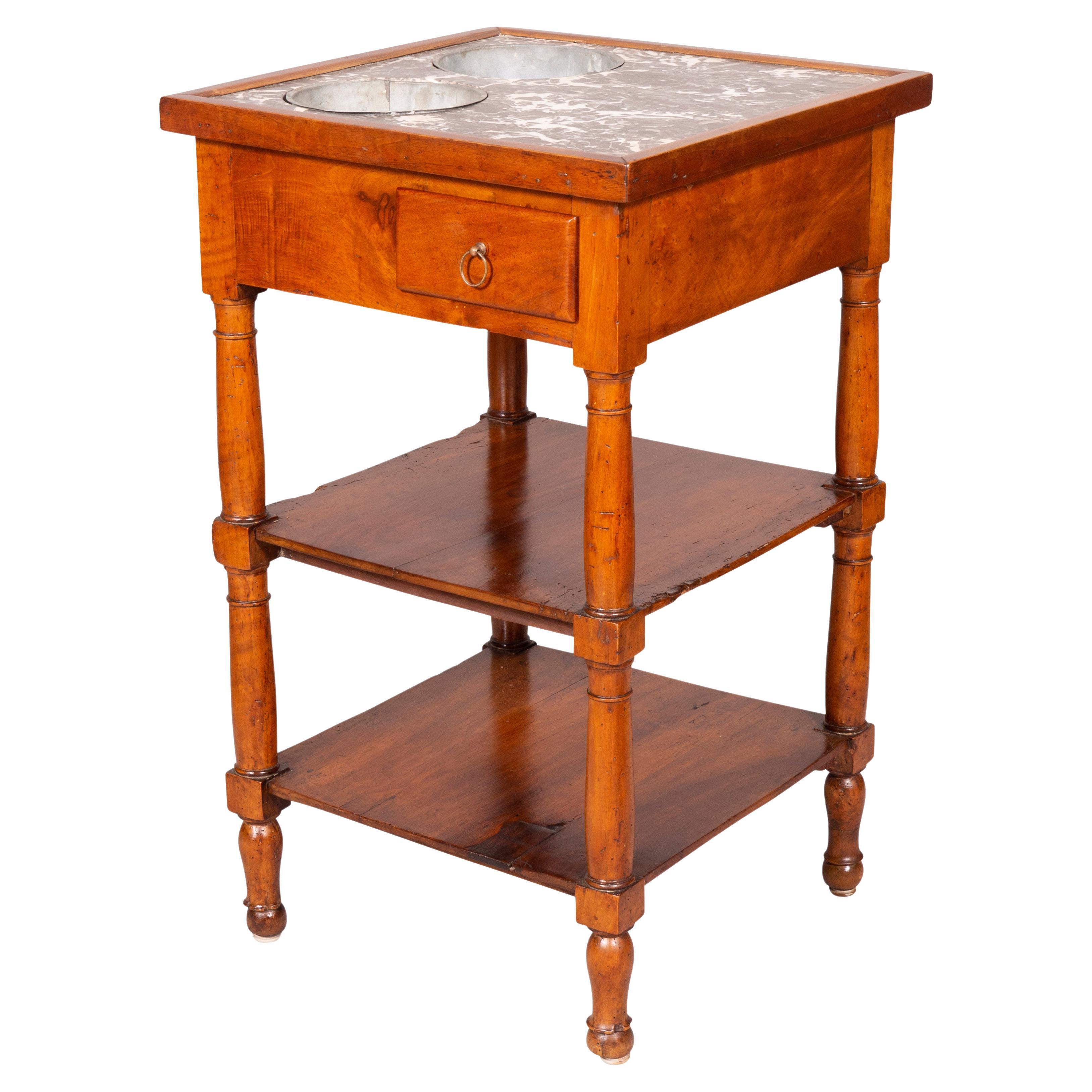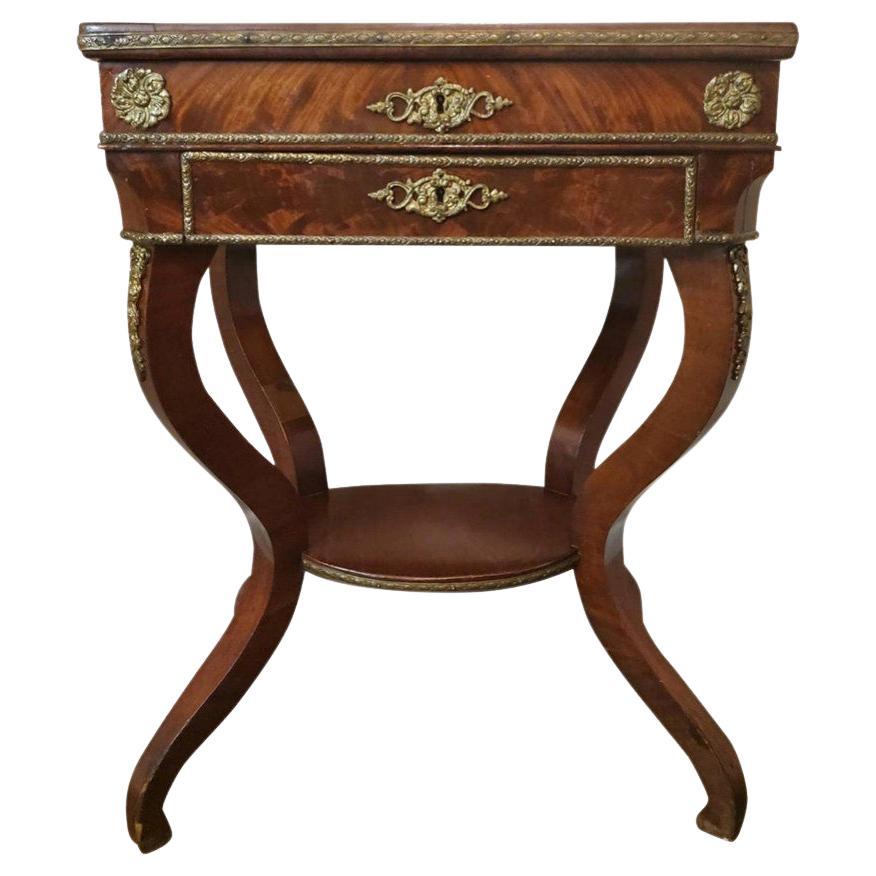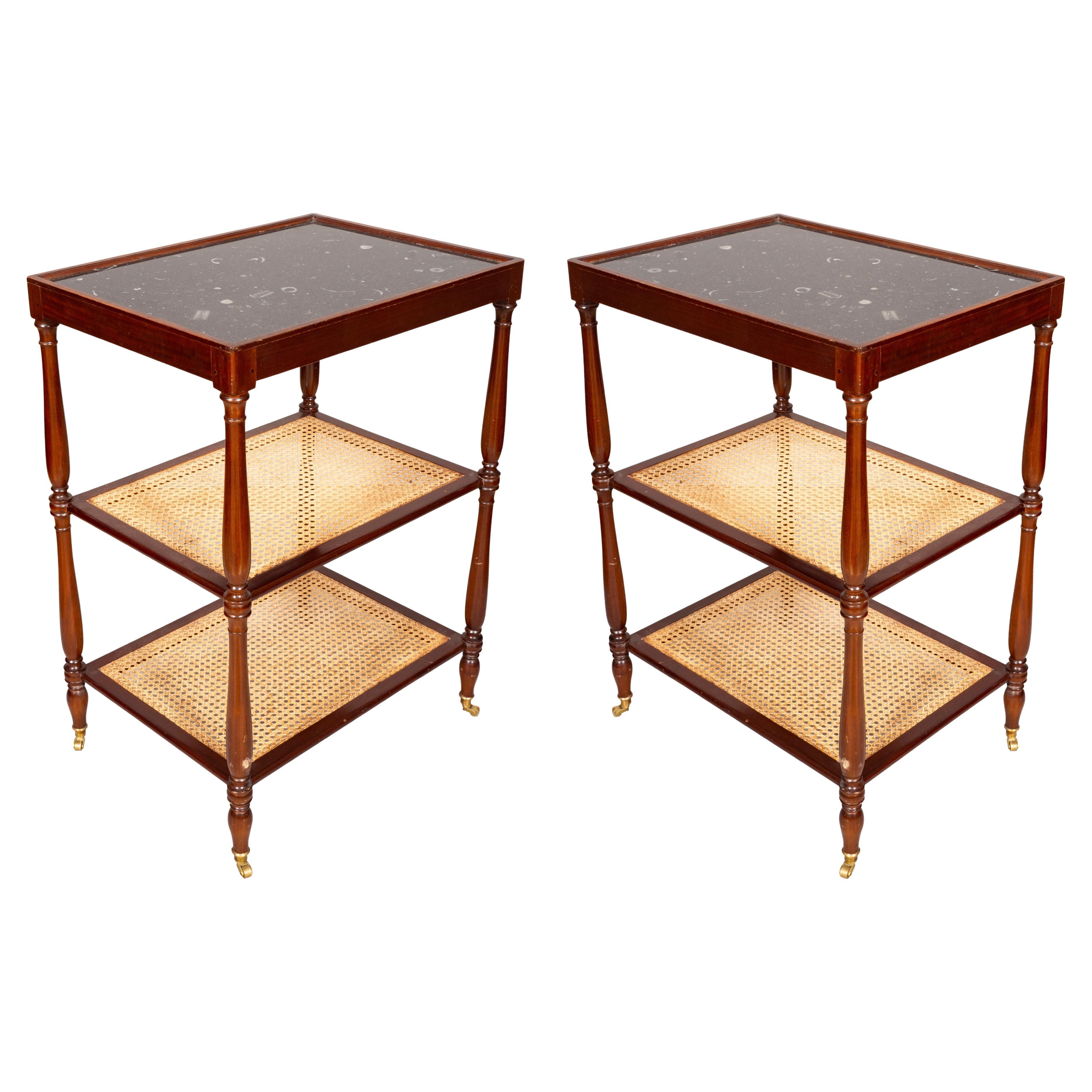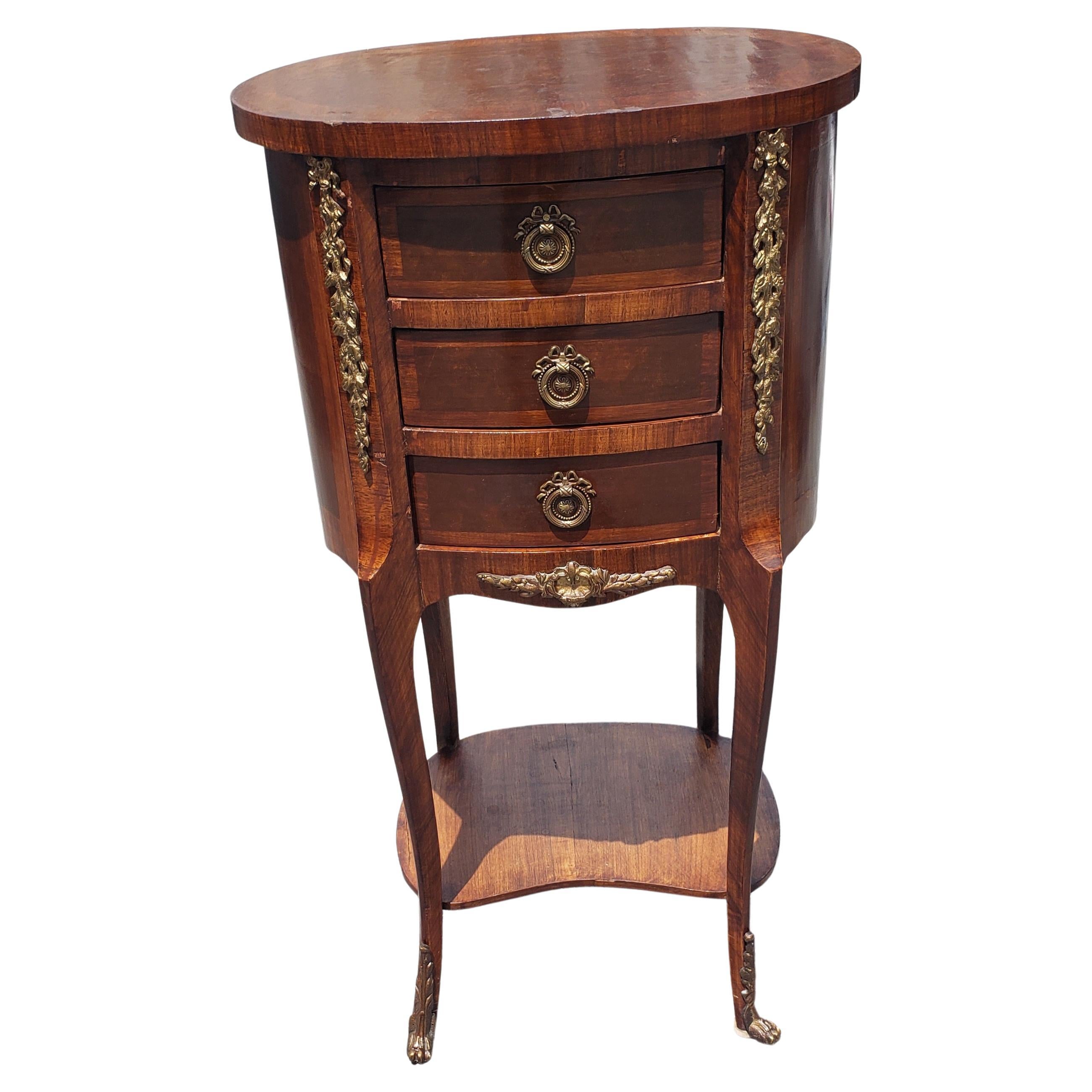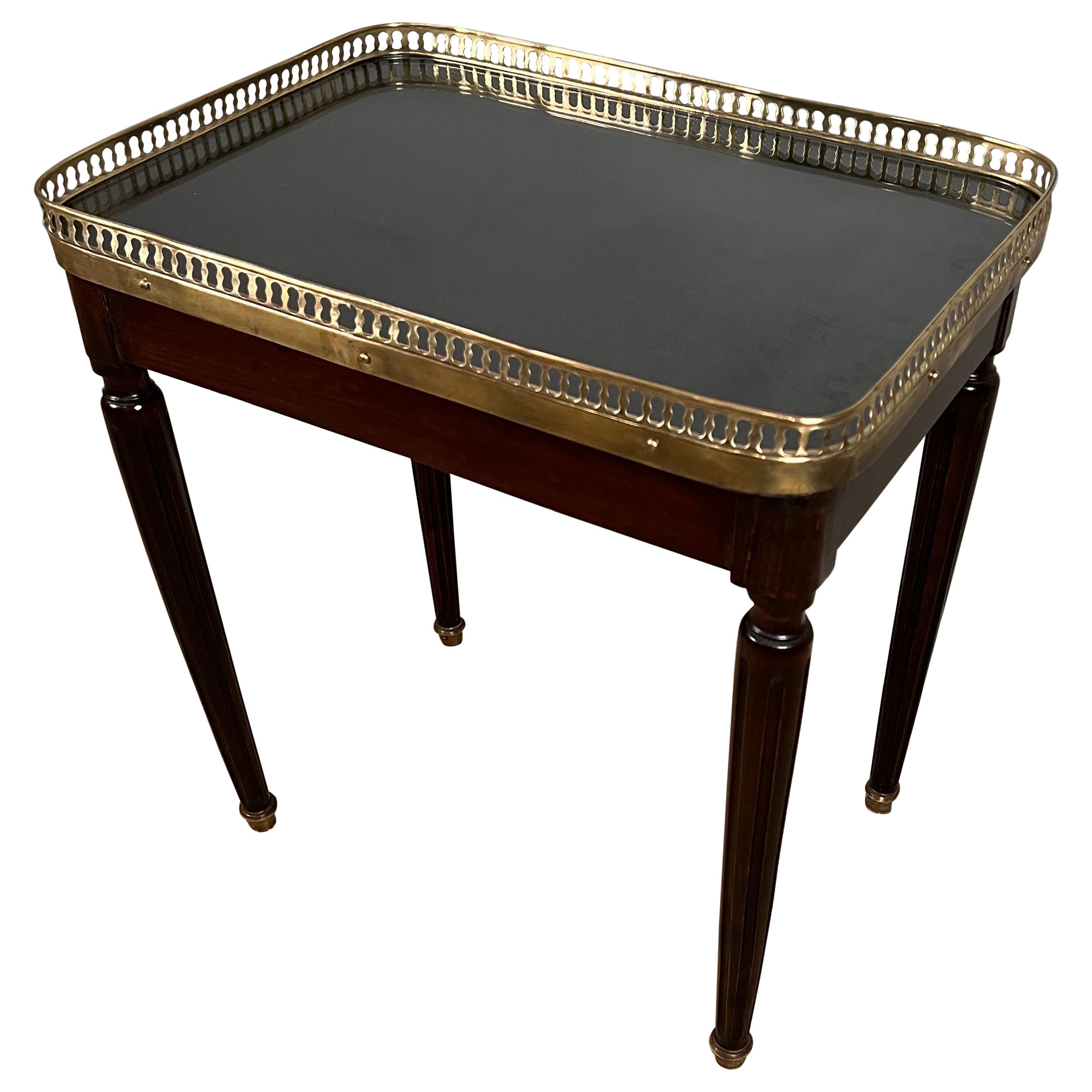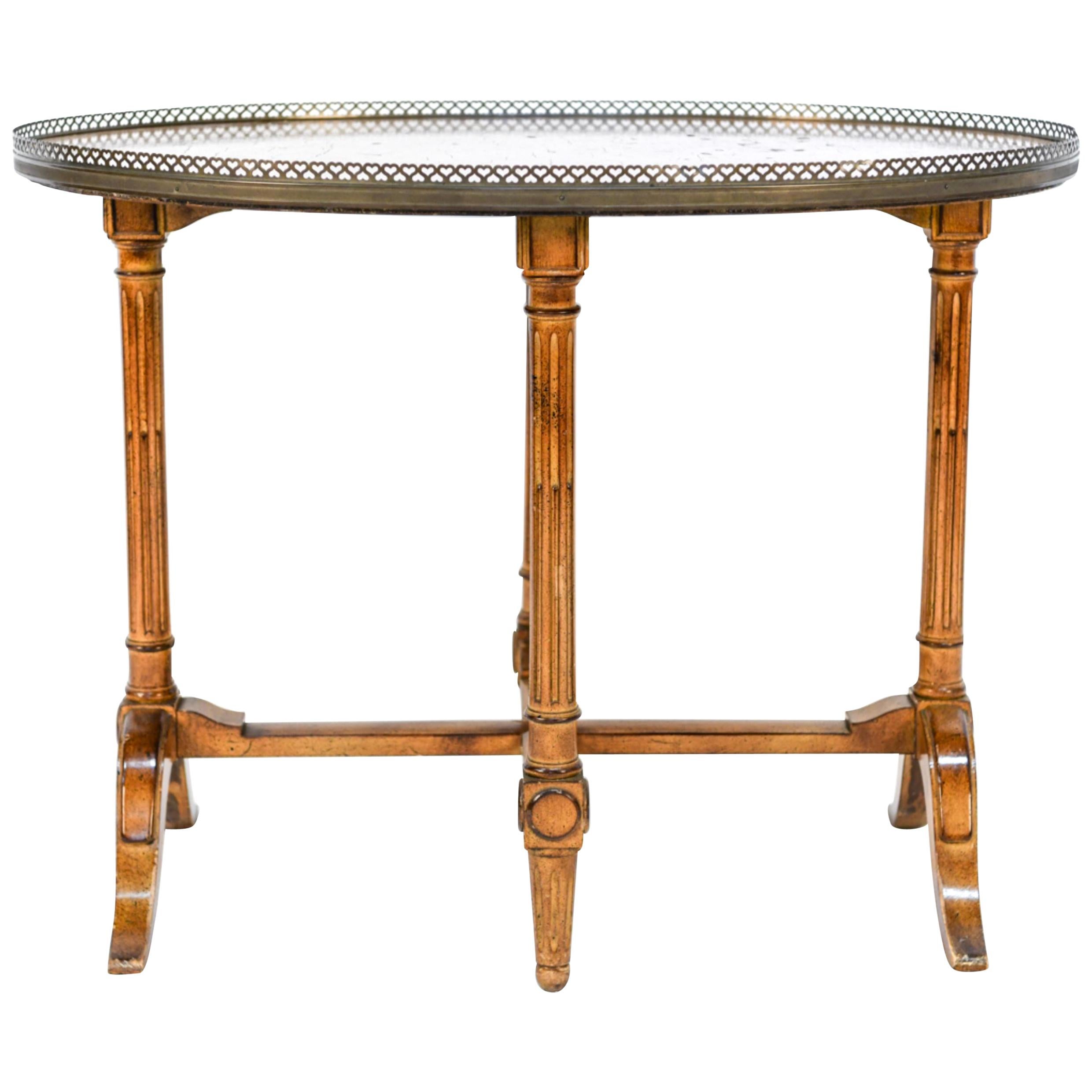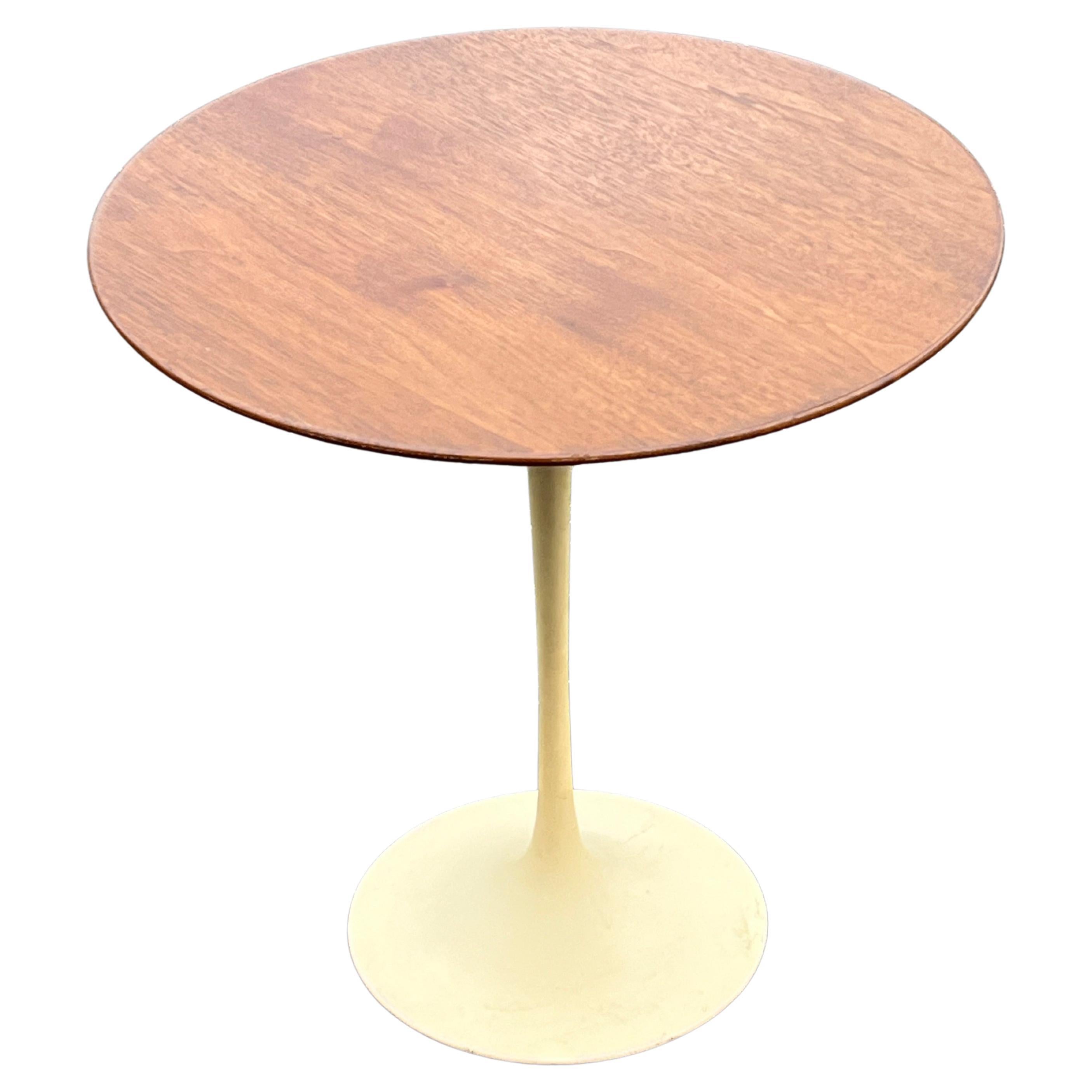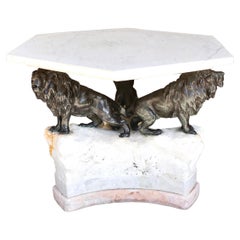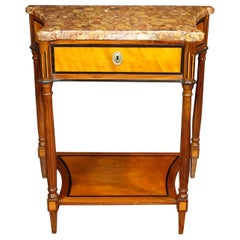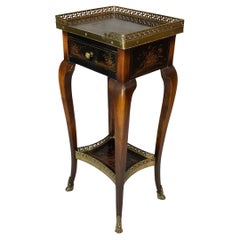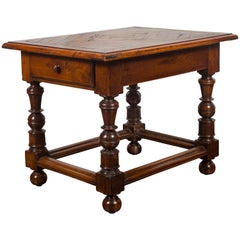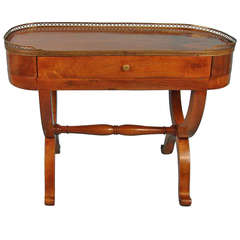
Attractive Charles X French Walnut Table with Brass Gallery and Drawer
View Similar Items
Want more images or videos?
Request additional images or videos from the seller
1 of 6
Attractive Charles X French Walnut Table with Brass Gallery and Drawer
About the Item
- Dimensions:Height: 25 in (63.5 cm)Width: 33.5 in (85.09 cm)Depth: 15 in (38.1 cm)
- Style:Charles X (Of the Period)
- Materials and Techniques:Walnut
- Place of Origin:France
- Period:19th Century
- Date of Manufacture:Circa 1825
- Condition:Wear consistent with age and use. Minor structural damages. Repair to brass gallery. The piece has been repolished.
- Seller Location:San Francisco, CA
- Reference Number:Seller: C614-161stDibs: LU85521193568
About the Seller
5.0
Recognized Seller
These prestigious sellers are industry leaders and represent the highest echelon for item quality and design.
Platinum Seller
These expertly vetted sellers are 1stDibs' most experienced sellers and are rated highest by our customers.
Established in 1982
1stDibs seller since 2008
313 sales on 1stDibs
Typical response time: 1 hour
Associations
The Art and Antique Dealers League of AmericaAntiques Associations Members
More From This SellerView All
- Neoclassical Style Side Table with Stone Top Resting on Trio of Bronze LionsLocated in San Francisco, CAA dramatic hexagonal low table, the stone top supported by a secondary smaller stone top, all resting on a trio of well-cast bronze lions with intertwined tails on a stone base with ...Category
20th Century Italian Neoclassical End Tables
MaterialsLimestone, Bronze
- Regency Gilt Metal Mounted Tilt-Top Mirrored Occasional TableLocated in San Francisco, CAA stylish and fine quality Regency period rosewood tilt-top occasional table with an inset mirrored top, framed by a gilt metal edge, the side with gadrooned decoration, supported on a hexagonal column...Category
Antique 1820s English Regency End Tables
MaterialsBrass
- Northern European Inlaid Satinwood Neoclassical Marble-Top Console TableLocated in San Francisco, CAA good quality late 18th century continental neoclassical parcel ebonized satinwood small console table, the shaped breche d'alep marble top above a single drawer framed by inlaid co...Category
Antique 1790s European Neoclassical Side Tables
MaterialsMarble
- Antique Chinese Red Lacquer Panel Now a Low TableLocated in San Francisco, CAA beautiful Chinese red lacquer panel depicting court figures in a garden setting, the foreground with 2 women and horses, the center with a group o...Category
Antique Early 19th Century Coffee and Cocktail Tables
MaterialsLacquer
- English Rectangular Georgian Period Mahogany Pembroke Table with Single DrawerLocated in San Francisco, CAA rectangular English mahogany pembroke table of typical form, the top with a finely inlaid border above a central drawer, with 2 folding end sections, all supported on square tapere...Category
Antique Early 19th Century English Hepplewhite Side Tables
MaterialsMahogany
- English Victorian Hardwood Brass Mounted Standish with Single DrawerLocated in San Francisco, CAAn English brass mounted standish with a single drawer and a central handle flanked by 2 replaced inkwells. The piece is centered by a beautifully engraved brass decorative element a...Category
Antique 1870s English Victorian Inkwells
MaterialsBrass
You May Also Like
- Charles X Walnut and Marble Drinks Table or RafraichissoireLocated in Essex, MASquare gray and white marble top with circular bottle holders with tole liners over a frieze with small drawer, turned legs and two lower shelves, turned feet.Category
Antique 1830s French Charles X End Tables
MaterialsMarble
- 20th Century Oriental Chinoiserie Decorated One Drawer Stand with Brass GalleryLocated in Lambertville, NJ20th Century Oriental decorated one drawer stand with brass gallery. This is a great little accent table. Only 12 1/4" by 10 1/4" deep. Great condition.Category
Late 20th Century Unknown End Tables
MaterialsWood
- English 1850s Walnut Parquet Top Table with Single Drawer and Turned LegsLocated in Atlanta, GAAn English walnut parquet top table from the mid-19th century, with single drawer and turned legs. Created in England during the 1850s, this walnut table features an exquisite parque...Category
Antique Mid-19th Century English End Tables
MaterialsWalnut
- 19th C. French Charles X Restoration Period Sewing Stand Work TableLocated in Forney, TXA scarce period Charles X (1818-1834) French Restoration mahogany travailleuse sewing (thread stand - side table - jewelry dressing table) with light, warm, beautifully aged patina. Born in France in the early 19th century, almost certainly Parisian work, exquisitely hand-crafted, this exceptionally executed example features ornate gilt bronze ormolu mounts, escutcheons, and elaborate gilt metal trim. Having a highly figured light mahogany hinged lid top, lifting open to reveal a striking finished interior with divided compartments and original inset mirror plate. The conforming rectangular case fitted with a faux drawer front over a dovetailed drawer with sectioned interior. Elegantly rising on oval-shaped medial shelf stretcher-joined curvacious legs. Dimensions (approx): 27" High, 20" Wide, 13.5" Deep Stunning light almost blonde antique mahogany coloring and mellow warm tone, superb wood grain detail, and charming, beautifully aged patina over the whole. Great shape overall. Retaining original antique character marks, wear consistent with age and indicative of minimal use, nothing that detracts from the aesthetics or functionality, but only adds to the overall authenticity, refined elegant warmth, luxurious sophistication, and cozy unpretentious rustic elegance. Delivered cleaned, hand waxed, polished French patina finish, ready for immediate use and generational enjoyment! What is Charles X style: The comte d’Artois – or Charles X - was the son of the dauphin Louis-Ferdinand de Franc and Marie-Josèphe de Saxe. He succeeded his two brothers Louis XVI and Louis XVIII and became the King of France in 1824. Thirty years after the French Revolution, he wanted to embody the return of monarchy and became the leader of the catholic party . As the previous kings, he was crowned in 1825 but he was soon overthrown by the revolution in July, 1830, called "Trois Glorieuses". He left then for England, Scotland, Prague and Istria where he died in 1836. Charles X style lasted from 1818 to 1834 and happened during the Bourbon Restoration (French Restoration). This style did not replace totally the style of furniture from the French Empire but it was different from the formalism in the Napoleonic era, during which strictness and simplicity were inspired by Greco-Roman art. Indeed, artistic fields flourished. In terms of furniture, this renewal was suggested by the softening of shapes. Even though the simple aspect from the French Empire was still visible, shapes became curvier with volutes and arabesques. Another distinction is the loss of the massive aspect of furniture and the decrease of dimensions in order to decorate smaller appartments. Handling ability and comfort were key-words in the making of furniture. Apartments had essential elements such as chests of drawers, big rounded tables in the dining room, desks or secretaries, armoires and even dressing tables, comfortable fainting couches in the living room, small tables, pedestal tables, as well as gondola chairs. The wavy aspect of the latters certainly represent Charles X style the best. One of the most emblematic features of this style is the use of bois clairs – light woods in warm blond tones - and indigenous woods that are varnished in order to highlight the grains. Bird's-eye maple, ash trees, plane trees, yew trees, beech trees, olive trees and cedar trees were most likely to be used. Indeed, at the beginning of the 19th century dark woods were hard to find. In 1806, the Napoleon’s Continental System was established in order to ruin the United Kingdom by preventing the country from any business with the rest of Europe. Therefore craftsmen had to find alternatives from mahogany which was the most commonly used material at this time. After 1815, the import of wood was even more difficult because of peace treaties and the European political situation, which contributed to the popularity of the bois clairs and indigenous woods. The furniture was often decorated with fine inlays made out of dark wood representing foliage, which contrasted with the veneer. Even though these patterns can look like bronze decorations from the Empire era, they were far more simple and did not represent any military or mythological attributes. On the tables, trays were sometimes made out of marble as in the French Empire, but it was often put aside and inlaid veneer, Verre Eglomisé – a type of glass with a mirror finish –, mirror or porcelain from Sèvres or Paris were more likely to be used. Decorative elements from the Monarchy were highly appreciated again as they suggested luxury. Indeed, marquetry work was particularly fashionable - Boulle marquetry thrived around 1820 as the works of the Levasseur family can show. In the same way, draperies and trimmings referred to the monarchist splendour. Fabrics were often white – the traditional colour of the Bourbons – or light coloured as oppposed to the typical green from the Napoleonic era. One of the most symbolic figures from this period of time might be Jean-Jacques Werner (1791-1849), a cabinetmaker who worked for prestigious clients such as the Duchesse de Berry who was Charles’s step-daughter. His works can be seen at the Musée des Arts Décoratifs and at the Grand Trianon in the Palace of Versailles. The duchess’s appartments situated at the pavillon de Marsan and at the Palais de Saint Cloud illustrate Charles X style the best with furniture made out of bois clairs and ornamented with dark wood patterns or fine gold decorations. Chales X style allows a transition between the sobriety of the Empire style and the abundant aspect of Louis-Philippe style. The gothic style started at this time through the "style à la cathédrale", inspired by religious architecture, which thrived from 1827 to 1830. Indeed, at the beginning of the 19th century, Romanticism put the spotlight on the Middle Ages. Cabinetmakers were not inspired by the medieval furniture but rather by architectural elements of churches and cathedrals. For instance the backs of chairs were decorated with arches shaped like rib and serration. In the same way, before Charles X abdicated, pieces of furniture were made out of dark woods – such as mahogany, which was used again in France – and were inlaid with light wood. Romanticism also influenced the layout of furniture in appartments to suggest movement through a mix of various styles, various shapes and various sizes, as opposed to the static aspect of Neoclassicism. The start of industrialisation and mechanisation also influenced this style as early technical developments led to the production of pieces of furniture in series. Credit: Marc Maison Bibliography: FANIEL Stéphane (Dir.), Le Dix-neuvième Siècle Français, Collection Connaissance des Arts, 1957, Hachette SASSONE, Adriana Boidi, Furniture from Rococo to Art Deco, 2000, Evergreen -- Extremely versatile: As warm and attractive as it is useful, this remarkable antique table having the ideal size and small proportions for a variety of different uses, including as a side table, accent or occasional table, tall sofa...Category
Antique Early 19th Century French Charles X End Tables
MaterialsBronze, Ormolu
- Pair of Charles X Style Mahogany TablesLocated in Essex, MAEach with rectangular grey marble inset tops over two conforming caned shelves, raised on turned legs and casters.Category
Antique 1820s European Charles X End Tables
MaterialsCane, Mahogany
$4,800 / set - French Louis XV Style Brass Ormolu Mahogany 2-Tier 3-Drawer Oval Side TableLocated in Germantown, MDFrench Louis XV Style Ormolu Mounted Mahogany 2-tier 3-drawer side table in very good vintage condition. Features 3 drawers opening and closing very smoothly. Bottom shelf for additional display space. Ormolu mounted feet. Measures 17.25 inches in width, 12.75 inches in depth and stands 32.5 inches tall...Category
Mid-20th Century American Louis XV Tables
MaterialsBronze
$1,072 Sale Price26% Off
